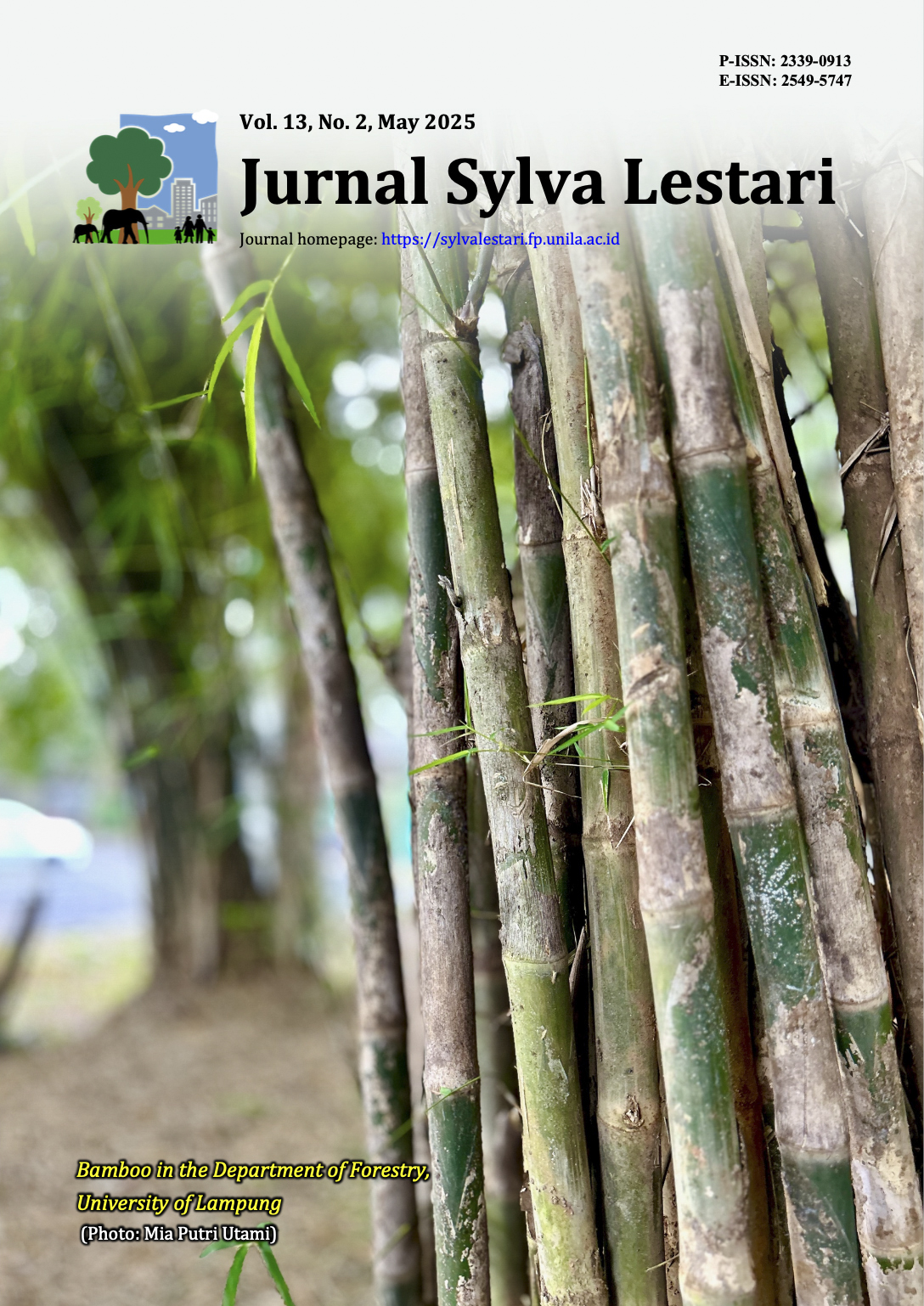Characteristics of Cold-Setting Adhesive Derived from Waste Styrofoam for Bonding Laminated Gmelina (Gmelina arborea) Wood
DOI:
https://doi.org/10.23960/jsl.v13i2.1080Abstract
Developing cold-setting adhesives derived from waste styrofoam (WS) of expanded polystyrene foam for laminated gmelina wood involves innovative recycling of WS into functional adhesives. As a type of thermoplastic polymer, WS can be used as an adhesive at room temperature. In this study, WS was functionalized into cold-setting adhesives through dissolution and cross-linking reaction with methylene diphenyl diisocyanate (MDI) at a concentration of 40% w/v at 60°C. The mixture was then stirred at 200 rpm for 30 minutes. The adhesive is characterized by its ability to be set at room temperature, offering environmental benefits and practical applications in wood lamination. Solids content, gelation time, viscosity, cohesion strength, functional group analysis, morphological features, and curing temperature analysis were performed to characterize the cold-setting adhesives. The WS-MDI-40% had 62.4% solids content, 906.8 mPa.s viscosity, 182.3 Pa cohesion strength, and 197.8 minutes of gelation time at room temperature. The adhesion performance was evaluated in laminated wood using gmelina wood at glue spread rates of 250 and 300 g/m2 and cold-pressed at various durations. The block shear strength value of laminated wood bonded with WS-MDI-40% at 300 g/m2 and cold-pressed for 24 hours was higher than that of other samples, reaching 8.2 MPa, which met the Japanese Agricultural Standard (JAS No. 234) for glued laminated timber, exceeding the minimum requirement of 5.4 MPa. Fourier transform infrared (FTIR) spectroscopy revealed that the cold-setting WS-MDI-40% were cross-linked via urethane linkages (R–NH–COO–R). The free –N=C=O groups could react with the –OH groups of gmelina wood to produce laminated wood during cold-pressing. This study suggested a recycling alternative of WS into a cold-setting wood adhesive for laminated wood, which can be utilized in interior applications.
Keywords: adhesive, block shear strength, cohesion strength, cold-setting, gmelina wood
Downloads
Downloads
Published
How to Cite
Issue
Section
Statistics
 Abstract views: 190 times
Abstract views: 190 times PDF downloaded: 212 times
PDF downloaded: 212 times
Metrics
License
Copyright (c) 2025 Tati Karliati, Rudi Dungani, Anne Hadiyane, Wahyu Hidayat, Muhammad Adly Rahandi Lubis

This work is licensed under a Creative Commons Attribution-NonCommercial 4.0 International License.
Authors retain copyright and grant the journal right of first publication with the work simultaneously licensed under a Creative Commons Attribution-NonCommercial 4.0 Licence that allows others to share the work with an acknowledgement of the work's authorship and initial publication in this journal.
Authors are able to enter into separate, additional contractual arrangements for the non-exclusive distribution of the journal's published version of the work (e.g., post it to an institutional repository or publish it in a book), with an acknowledgement of its initial publication in this journal.
Authors are permitted and encouraged to post their work online (e.g., in institutional repositories or on their website) prior to and during the submission process, as it can lead to productive exchanges, as well as earlier and greater citation of published work (See The Effect of Open Access).









